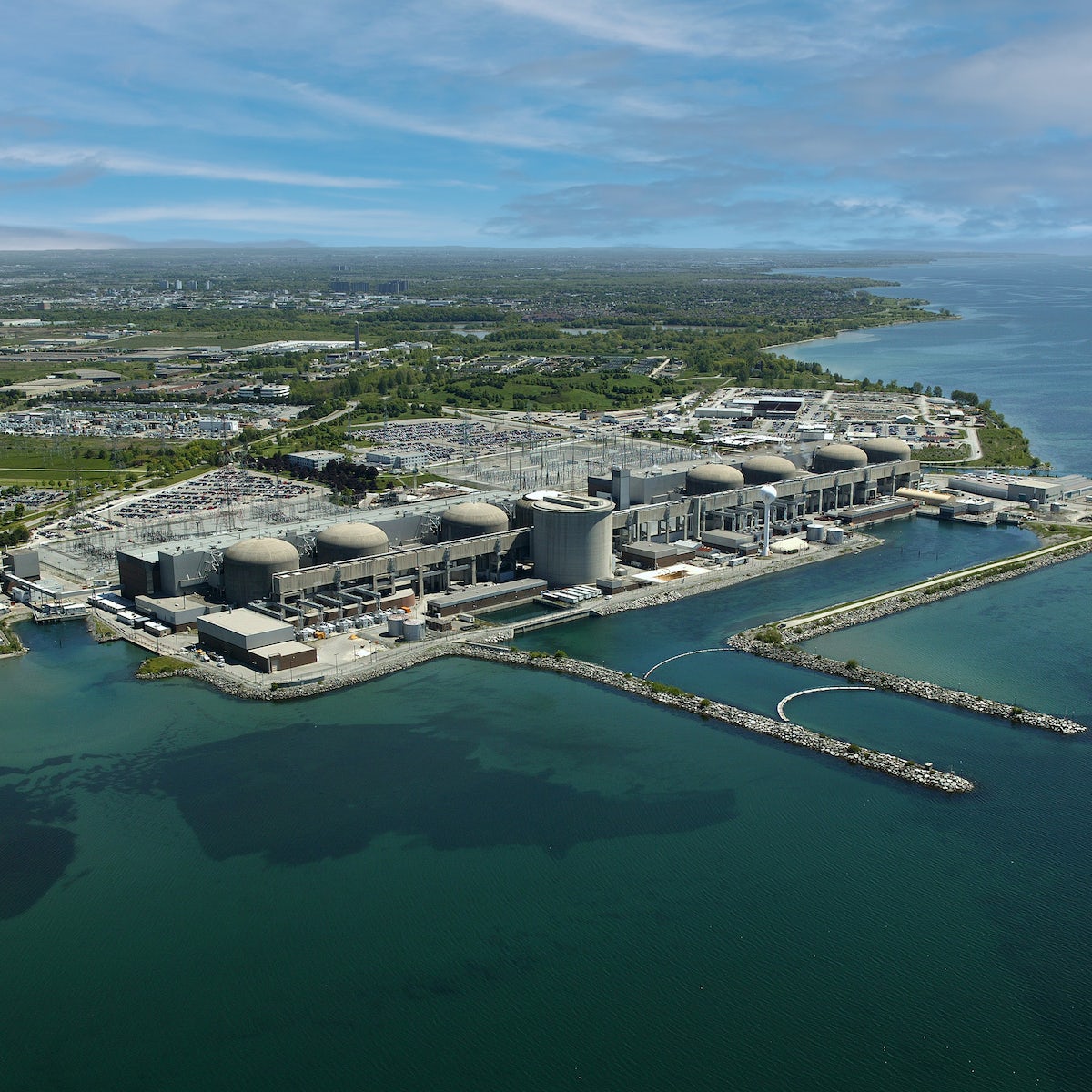Operator OPG to refurbish four Candu units onsite.
The Ontario provincial government in Canada has pledged support for the long-term operation of four units at the Pickering nuclear power station, owned and operated by Ontario Power Generation (OPG), for an additional 30 years.
Pickering currently has six Candu 500 515-MW pressurised heavy water reactor units in commercial operation – Units 1, 4, 5, 6, 7, and 8.
Under OPG’s operating schedule, Pickering-1 and -4, which started commercial operation in 1973, are set for a permanent retirement at the end of 2024. While, since 2022, OPG has been seeking a lifetime extension until September 2026 for Units 5 to 8, which have been commercial since the mid-1980s.
According to Todd Smith, Ontario’s energy minister, global businesses are interested in expanding their operations in regions with reliable, affordable, and clean electricity, and a refurbished Pickering nuclear station would help Ontario compete and attract future investment.
“The refurbishment of Pickering would create thousands of new jobs and help produce at least another 30 years of safe, reliable and clean electricity to power the next major international investment, the new homes we are building, and industries as they grow and electrify,” said Smith during an announcement on Tuesday (30 January).
“Our province still needs this station and its workers,” Smith told journalists.
Owner OPG is now to proceed with the initial stage of the refurbishment process which will last until the end of 2024 and include engineering and design work, and securing long-lead components that could require years for manufacturing.
A statement by Ontario said the government is supporting OPG’s CAD 2 billion (€1.37bn, $1.49bn) budget for this first project phase.
The statement said OPG’s preliminary schedule foresees the refurbishment of Pickering to be completed by the mid-2030s.
Ontario said the refurbishment of Pickering is expected to increase the province’s gross domestic product (GDP) by CAD 19.4 billion over the 11-year project period and create 11,000 jobs per year.
The government quoted a report by the national Independent Electricity System Operator (IESO) as saying that the Pickering refurbishment would provide “better overall ratepayer value in terms of costs and risks, when compared against non-emitting generation alternatives”.
The Pickering long-term operation project, however, still remains a subject to regulatory approval by the Canadian Nuclear Safety Commission.
Pickering Records Record Generation, Refurbishment Under Way At Darlington
OPG reported earlier this month that Pickering recorded its highest generation output since 2019 and its second-highest output as a six-unit nuclear station (since 2005). The station provided for 14% of Ontario’s electricity needs.
Pickering-1 to -4 were shut down in 1997 over safety concerns. Units 1 and 4 were refurbished and restarted in 2005 and 2003, while the refurbishing of Units 2 and 3 was seen economically unviable and the two units were permanently retired.
According to data by the International Atomic Energy Agency, the six units at Pickering have a reference net combined capacity of about 3,100 MW. This means a life extension for Pickering’s four newest units will retain about 2,060 MW of that capacity.
OPG began in 2016 a 10-year refurbishment project of its Ontario-based Darlington nuclear power station, which has four commercial Candu 850 878-MW units, with the goal to operate the facility for another 30 years.
Darlington-2 and -3 have already returned to service, while the company says work is on schedule for Darlington-1 and -4, expected for completion in 2025 and 2026. The cost of the four-unit project had been estimated at CAD12.8bn.
Ken Hartwick, OPG president and chief executive, said the company’s experience with Darlington “will be invaluable” as refurbishment work will begin for Pickering. He said Darlington’s refurbishment was “a highly complex project that remains on time and on budget.”
The refurbishment of the Pickering nuclear station is part of Powering Ontario’s Growth plan, which aims to meet electricity demand and reduce emissions by supporting the electrification of the province’s economy. This includes advancing nuclear energy, procuring storage and natural gas generation, developing new transmission infrastructure, reducing demand through energy efficiency programmes, and planning for future transmission to address system bottlenecks and explore export opportunities.
According to the Canadian Nuclear Association, international data shows that the lifetime extension of existing nuclear facilities is the cheapest form of low-carbon power.


